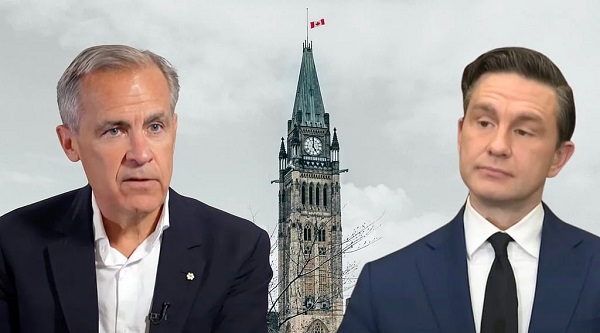Alberta
Have Alberta’s Skilled Workers had Enough?

The Canadian oil and gas industry suffered another blow on Sunday, October 25, when Cenovus Energy Inc. announced a $3.8 billion merger with 82-year old Canadian oil and gas company, Husky Energy. Headquartered in Calgary, Alberta, Husky is projected to lose up to 25% of its workforce as a result of the merger, approximately 2,150 jobs – mainly in Calgary.
The news, which fell on Alberta’s increasingly restless population of unemployed workers and struggling families, many of whom believe Alberta has been left out in the cold for far too long already, has fueled ongoing discussions of a provincial brain drain.

Simply put, brain drain is defined as “the departure of educated or professional people from one country, economic sector or field, usually for better pay or living conditions”. Recent statistics show this concept is rapidly gaining traction in Alberta as residents seek to escape the increasingly grim economic landscape to pursue opportunities elsewhere, beyond the provincial borders.
As Canada’s largest producer of oil and natural gas, Alberta is no stranger to the boom and bust nature of the industry, experiencing cyclical periods of economic prosperity influenced by global conditions followed by detrimental crashes and ensuing hard times. Prior to this year, Alberta experienced a major economic crash in 2015, with the Canadian oil and gas industry suffering a $91 billion loss in revenue and layoffs reaching 35,000 workers in Alberta alone (1).
In the last 5 years, countless Albertans have struggled to regain their footing on shaky economic and political grounds, suffering substantial losses and insecurity. In this setting, the catastrophic impacts of the global COVID-19 pandemic, coupled with pipeline delays and ongoing cuts in the Canadian oil and gas sector have left many Albertans with the feeling of being kicked while already down.
 According to the Government of Alberta Economic Dashboard, the price of oil for many Alberta oil producers fell 36.6% from September 2019, averaging $28.43 USD per barrel in September 2020, according to the Western Canada Select (WCS) price. The coinciding unemployment rate in Alberta was 11.7% in September 2020, down from its 15.5% spike in May 2020, but still 6.6% higher than in September 2019 (2).
According to the Government of Alberta Economic Dashboard, the price of oil for many Alberta oil producers fell 36.6% from September 2019, averaging $28.43 USD per barrel in September 2020, according to the Western Canada Select (WCS) price. The coinciding unemployment rate in Alberta was 11.7% in September 2020, down from its 15.5% spike in May 2020, but still 6.6% higher than in September 2019 (2).
At this point, it seems a number of Albertans have simply had enough. According to The Alberta Annual Population Report 2019/20, “Alberta’s interprovincial migration patterns are heavily influenced by the economic conditions in the province, and as the economy cooled, the province experienced net outflows.” The report shows that 2,733 residents left Alberta between April and June 2020.
The loss of another 2,150 oil and gas jobs as a result of the Cenovus merger comes as a disappointing yet predictable defeat for industry workers who have remained “down on their luck” for many years in Alberta. Effectively decimating industries worldwide, the pandemic has also successfully pulled the rug from beneath Alberta’s shaky footing, tanking oil and gas once more and leaving countless skilled workers with nowhere to go but out.
For more stories, visit Todayville Calgary.
Alberta
‘Weird and wonderful’ wells are boosting oil production in Alberta and Saskatchewan

From the Canadian Energy Centre
Multilateral designs lift more energy with a smaller environmental footprint
A “weird and wonderful” drilling innovation in Alberta is helping producers tap more oil and gas at lower cost and with less environmental impact.
With names like fishbone, fan, comb-over and stingray, “multilateral” wells turn a single wellbore from the surface into multiple horizontal legs underground.
“They do look spectacular, and they are making quite a bit of money for small companies, so there’s a lot of interest from investors,” said Calin Dragoie, vice-president of geoscience with Calgary-based Chinook Consulting Services.
Dragoie, who has extensively studied the use of multilateral wells, said the technology takes horizontal drilling — which itself revolutionized oil and gas production — to the next level.
“It’s something that was not invented in Canada, but was perfected here. And it’s something that I think in the next few years will be exported as a technology to other parts of the world,” he said.
Dragoie’s research found that in 2015 less than 10 per cent of metres drilled in Western Canada came from multilateral wells. By last year, that share had climbed to nearly 60 per cent.
Royalty incentives in Alberta have accelerated the trend, and Saskatchewan has introduced similar policy.
Multilaterals first emerged alongside horizontal drilling in the late 1990s and early 2000s, Dragoie said. But today’s multilaterals are longer, more complex and more productive.
The main play is in Alberta’s Marten Hills region, where producers are using multilaterals to produce shallow heavy oil.
Today’s average multilateral has about 7.5 horizontal legs from a single surface location, up from four or six just a few years ago, Dragoie said.
One record-setting well in Alberta drilled by Tamarack Valley Energy in 2023 features 11 legs stretching two miles each, for a total subsurface reach of 33 kilometres — the longest well in Canada.
By accessing large volumes of oil and gas from a single surface pad, multilaterals reduce land impact by a factor of five to ten compared to conventional wells, he said.
The designs save money by skipping casing strings and cement in each leg, and production is amplified as a result of increased reservoir contact.
Here are examples of multilateral well design. Images courtesy Chinook Consulting Services.
Parallel
Fishbone
Fan
Waffle
Stingray
Frankenwells
Alberta
Alberta to protect three pro-family laws by invoking notwithstanding clause

From LifeSiteNews
Premier Danielle Smith said her government will use a constitutional tool to defend a ban on transgender surgery for minors and stopping men from competing in women’s sports.
Alberta Premier Danielle Smith said her government will use a rare constitutional tool, the notwithstanding clause, to ensure three bills passed this year — a ban on transgender surgery for minors, stopping men from competing in women’s sports, and protecting kids from extreme aspects of the LGBT agenda — stand and remain law after legal attacks from extremist activists.
Smith’s United Conservative Party (UCP) government stated that it will utilize a new law, Bill 9, to ensure that laws passed last year remain in effect.
“Children deserve the opportunity to grow into adulthood before making life-altering decisions about their gender and fertility,” Smith said in a press release sent to LifeSiteNews and other media outlets yesterday.
“By invoking the notwithstanding clause, we’re ensuring that laws safeguarding children’s health, education and safety cannot be undone – and that parents are fully involved in the major decisions affecting their children’s lives. That is what Albertans expect, and that is what this government will unapologetically defend.”
Alberta Justice Minister and Attorney General Mickey Amery said that the laws passed last year are what Albertans voted for in the last election.
“These laws reflect an overwhelming majority of Albertans, and it is our responsibility to ensure that they will not be overturned or further delayed by activists in the courts,” he noted.
“The notwithstanding clause reinforces democratic accountability by keeping decisions in the hands of those elected by Albertans. By invoking it, we are providing certainty that these protections will remain in place and that families can move forward with clarity and confidence.”
The Smith government said the notwithstanding clause will apply to the following pieces of legislation:
-
Bill 26, the Health Statutes Amendment Act, 2024, prohibits both gender reassignment surgery for children under 18 and the provision of puberty blockers and hormone treatments for the purpose of gender reassignment to children under 16.
-
Bill 27, the Education Amendment Act, 2024, requires schools to obtain parental consent when a student under 16 years of age wishes to change his or her name or pronouns for reasons related to the student’s gender identity, and requires parental opt-in consent to teaching on gender identity, sexual orientation or human sexuality.
-
Bill 29, the Fairness and Safety in Sport Act, requires the governing bodies of amateur competitive sports in Alberta to implement policies that limit participation in women’s and girls’ sports to those who were born female.”
Bill 26 was passed in December of 2024, and it amends the Health Act to “prohibit regulated health professionals from performing sex reassignment surgeries on minors.”
As reported by LifeSiteNews, pro-LGBT activist groups, with the support of Alberta’s opposition New Democratic Party (NDP), have tried to stop the bill via lawsuits. It prompted the Smith government to appeal a court injunction earlier this year blocking the province’s ban on transgender surgeries and drugs for gender-confused minors.
Last year, Smith’s government also passed Bill 27, a law banning schools from hiding a child’s pronoun changes at school that will help protect kids from the extreme aspects of the LGBT agenda.
Bill 27 will also empower the education minister to, in effect, stop the spread of extreme forms of pro-LGBT ideology or anything else to be allowed to be taught in schools via third parties.
Bill 29, which became law last December, bans gender-confused men from competing in women’s sports, the first legislation of its kind in Canada. The law applies to all school boards, universities, and provincial sports organizations.
Alberta’s notwithstanding clause is like all other provinces’ clauses and was a condition Alberta agreed to before it signed onto the nation’s 1982 constitution.
It is meant as a check to balance power between the court system and the government elected by the people. Once it is used, as passed in the legislature, a court cannot rule that the “legislation which the notwithstanding clause applies to be struck down based on the Charter of Rights and Freedoms, the Alberta Bill of Rights, or the Alberta Human Rights Act,” the Alberta government noted.
While Smith has done well on some points, she has still been relatively soft on social issues of importance to conservatives , such as abortion, and has publicly expressed pro-LGBT views, telling Jordan Peterson earlier this year that conservatives must embrace homosexual “couples” as “nuclear families.”
-

 Crime2 days ago
Crime2 days ago‘Modern-Day Escobar’: U.S. Says Former Canadian Olympian Ran Cocaine Pipeline with Cartel Protection and a Corrupt Toronto Lawyer
-

 National23 hours ago
National23 hours agoPsyop-Style Campaign That Delivered Mark Carney’s Win May Extend Into Floor-Crossing Gambits and Shape China–Canada–US–Mexico Relations
-

 COVID-1920 hours ago
COVID-1920 hours agoCovid Cover-Ups: Excess Deaths, Vaccine Harms, and Coordinated Censorship
-

 Health1 day ago
Health1 day agoCDC’s Autism Reversal: Inside the Collapse of a 25‑Year Public Health Narrative
-

 Bruce Dowbiggin21 hours ago
Bruce Dowbiggin21 hours agoBurying Poilievre Is Job One In Carney’s Ottawa
-

 Alberta1 day ago
Alberta1 day ago‘Weird and wonderful’ wells are boosting oil production in Alberta and Saskatchewan
-

 Alberta1 day ago
Alberta1 day agoAlberta to protect three pro-family laws by invoking notwithstanding clause
-

 Great Reset11 hours ago
Great Reset11 hours agoEXCLUSIVE: The Nova Scotia RCMP Veterans’ Association IS TARGETING VETERANS with Euthanasia










